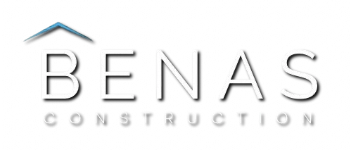Understanding renovation return on investment enables informed decision-making about which projects deserve your time and money. While every property and market presents unique circumstances, certain renovation categories consistently deliver strong returns while others may disappoint despite significant investment.
The Mathematics of Renovation ROI
Return on investment calculations consider both immediate cost recovery and long-term value appreciation. A renovation returning 70% of its cost immediately doesn’t represent failure if it also accelerates the property’s long-term appreciation or improves marketability during sale periods.
Market conditions significantly influence renovation returns. In seller’s markets, buyers often overlook minor imperfections while focusing on location and price. During buyer’s markets, properties with recent renovations command premium prices while dated properties languish unsold.
Regional preferences also impact returns dramatically. Luxury finishes that command premiums in metropolitan markets may not justify their costs in rural areas. Understanding local buyer preferences prevents over-improving for your market.
Kitchen Renovations: Balancing Investment and Return
Kitchen renovations represent the most requested and most expensive home improvements, with costs ranging from $15,000 for basic updates to over $100,000 for luxury transformations. The challenge lies in determining the optimal investment level for your specific situation.
Minor kitchen renovations typically return 80-85% of their cost because they address functionality without unnecessary luxury. These projects focus on cabinet refacing, countertop replacement, new appliances, and updated lighting. The existing layout remains unchanged, controlling costs while delivering significant visual impact.
Major kitchen renovations, including layout changes and high-end materials, typically return 60-70% of investment costs. However, these projects often prove essential for properties with severely outdated or dysfunctional existing kitchens. A 1980s kitchen with laminate countertops and oak cabinets may require comprehensive renovation to achieve marketability.
Cabinet considerations deserve special attention because they represent 35-40% of total kitchen costs. Refacing existing cabinets costs 30-50% less than replacement while delivering comparable visual results when existing cabinet boxes remain structurally sound. New cabinet doors, drawer fronts, and hardware transform appearances while preserving budgets for other improvements.
Appliance selections require balancing buyer appeal with cost control. Stainless steel remains universally appealing and typically justifies its cost premium. However, ultra-premium brands may not provide proportional returns unless your market specifically demands luxury amenities.
Bathroom Renovations: Small Spaces, Big Impact
Bathroom renovations offer excellent returns because they address daily comfort while solving common functional problems. Master bathroom renovations typically return 60-70% of costs, while secondary bathroom updates may return 70-80%.
The most impactful bathroom improvements focus on fixtures, lighting, and storage rather than space expansion. New toilets, vanities, and shower systems provide immediate visual and functional improvements without structural modifications. Adding storage through medicine cabinets, floating vanities, and built-in niches addresses common pain points.
Luxury additions like heated floors, steam showers, and soaking tubs may not provide proportional returns but significantly improve daily quality of life. These features also create unique selling propositions during marketing periods.
Accessibility improvements deserve consideration regardless of immediate ROI calculations. Walk-in showers, comfort-height toilets, and grab bar installations may prove essential for aging in place while appealing to buyers considering long-term needs.
Flooring Projects: Foundation for Success
Flooring renovations consistently provide strong returns because flooring impacts every room while addressing both aesthetic and functional concerns. Replacing worn carpet with hardwood typically returns 70-80% of investment while dramatically improving perceived value.
Hardwood flooring installations command premium returns because buyers strongly prefer hard surfaces over carpet in most areas. However, engineered hardwood often provides comparable returns at lower costs, particularly in challenging environments like basements or over concrete subfloors.
Luxury vinyl plank represents the fastest-growing flooring category because it delivers authentic wood and stone appearances with superior durability and water resistance. Installation costs significantly less than hardwood while providing excellent performance in kitchens, bathrooms, and high-traffic areas.
Tile selections for bathrooms and kitchens should prioritize durability and timeless appeal over trendy patterns or colors. Large format tiles create more seamless appearances while reducing maintenance requirements. Natural stone provides luxury appeal but requires more maintenance than porcelain alternatives.
Strategic Additions and Luxury Features
Certain renovation categories may not provide immediate returns but significantly improve marketability and buyer appeal. Luxury spa environments, wine cellars, and custom storage solutions create unique selling propositions that distinguish properties from comparable alternatives.
Home offices gained importance during pandemic years and continue appealing to buyers prioritizing work-from-home flexibility. Converting bedrooms or underutilized spaces into dedicated offices addresses contemporary lifestyle needs.
Energy efficiency improvements often provide returns through reduced utility costs rather than immediate value appreciation. High-efficiency HVAC systems, insulation upgrades, and smart home technologies reduce operating costs while appealing to environmentally conscious buyers.
Maximizing ROI Through Professional Execution
The quality of renovation execution dramatically impacts both immediate satisfaction and long-term returns. Professional contractors ensure work meets current building codes, uses appropriate materials, and achieves consistent quality standards.
Permit compliance prevents future problems during sale periods while ensuring safety standards. Many buyers specifically request documentation of permitted work, particularly for electrical, plumbing, and structural modifications.
Warranty coverage protects renovation investments while providing buyer confidence. Professional contractors typically provide comprehensive warranties covering both materials and workmanship, reducing long-term maintenance costs.
Market Timing and Strategic Planning
Successful renovations require understanding both current market conditions and long-term ownership plans. Renovations completed immediately before sale periods may not provide sufficient time for value appreciation, while improvements enjoyed for several years provide both lifestyle benefits and investment returns.
At Benas Construction, we help homeowners develop renovation strategies that balance immediate needs with long-term value considerations. Our experience with over 700 completed projects provides insight into which improvements deliver the best combination of lifestyle enhancement and investment return for different property types and market conditions.



